Leverage Keyword Segmentation for Deeper Analysis with Tag Assistant
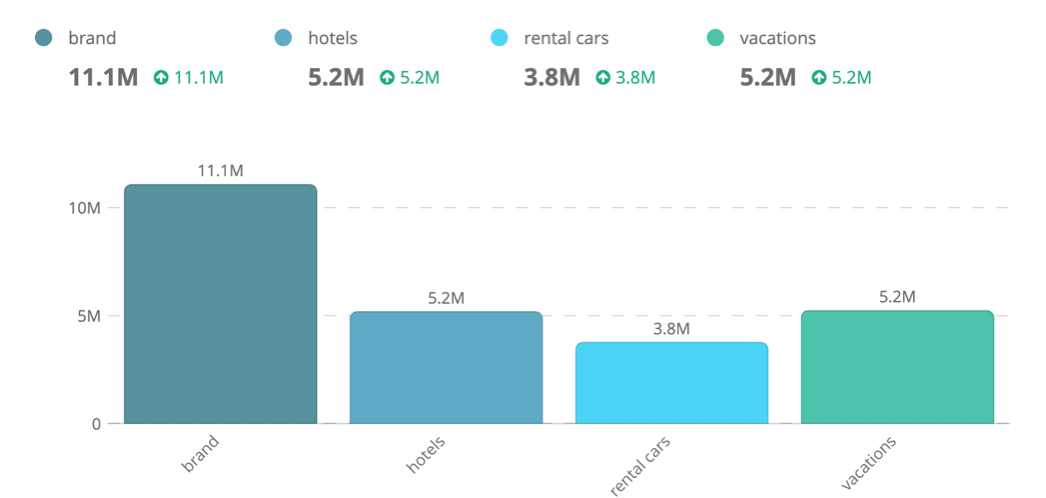
Understanding your site’s organic performance is not always straightforward. With most sites, you’re typically dealing with multiple types of products, services, and revenue streams, so bundling performance data from these groups together and looking at the entire website as a whole isn’t the smartest way of doing things. On the other side of things, looking at the individual keyword level isn’t scalable either.
Instead, grouping keywords into more manageable chunks will provide much more insightful data — and this is where segmentation comes in.
Segmentation is the process of dividing your keywords into multiple segments and using these to measure your performance and visibility.
Large sites like 3m.com rank for millions of keywords, but are made up of an incredibly diverse set of products and business units, each with their own set of priorities, initiatives, KPIs, and goals. Tracking these segments together simply doesn’t make sense.
By bundling them together by theme we can better understand the performance, and since all keywords in Dragon Metrics database of >600M SERPs are automatically grouped into >3,000 categories, we can instantly get a better picture of which types of keywords are driving organic traffic.
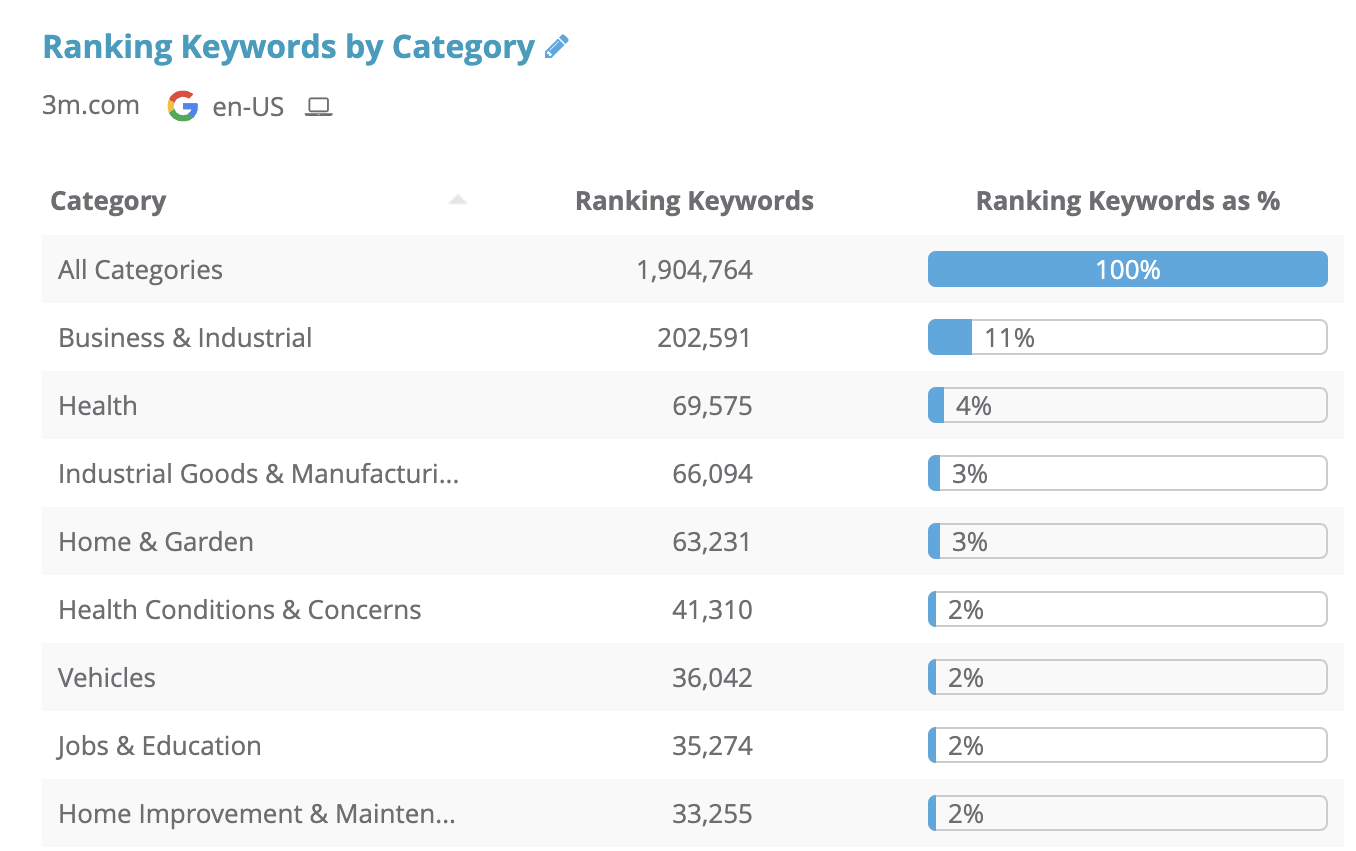
Segmentation has many benefits, helping you:
In order to reap the benefits of segmentation, keyword tagging is vital. But what is it?
Keyword tagging is the process of tagging groups of keywords so that you can group them into different categories. This categorization doesn’t have to be (and probably shouldn’t be) a 1:1 relationship — a single keyword may be tagged with any number tags in different dimensions. (For example, a keyword can be tagged as either branded or nonbranded as well as tagged by product type and search intent.)
To help you get a better idea of what we mean, some of our favorite tags include:
You don’t necessarily need to segment your website simply based on keywords either. You can segment your website by country/geo, ranking subfolder, product description pages vs product landing pages, or nearly anything else depending on what your business goals are.
That’s where Dynamic Tags come in, taking these possibilities to a whole new level.
Instead of applying tags directly to keywords, Dynamic Tags are a set of individualized filter rules that you create. Then every time keywords, search volume, or SERP data is updated, the rules are re-applied ensuring your tags are kept up to date.
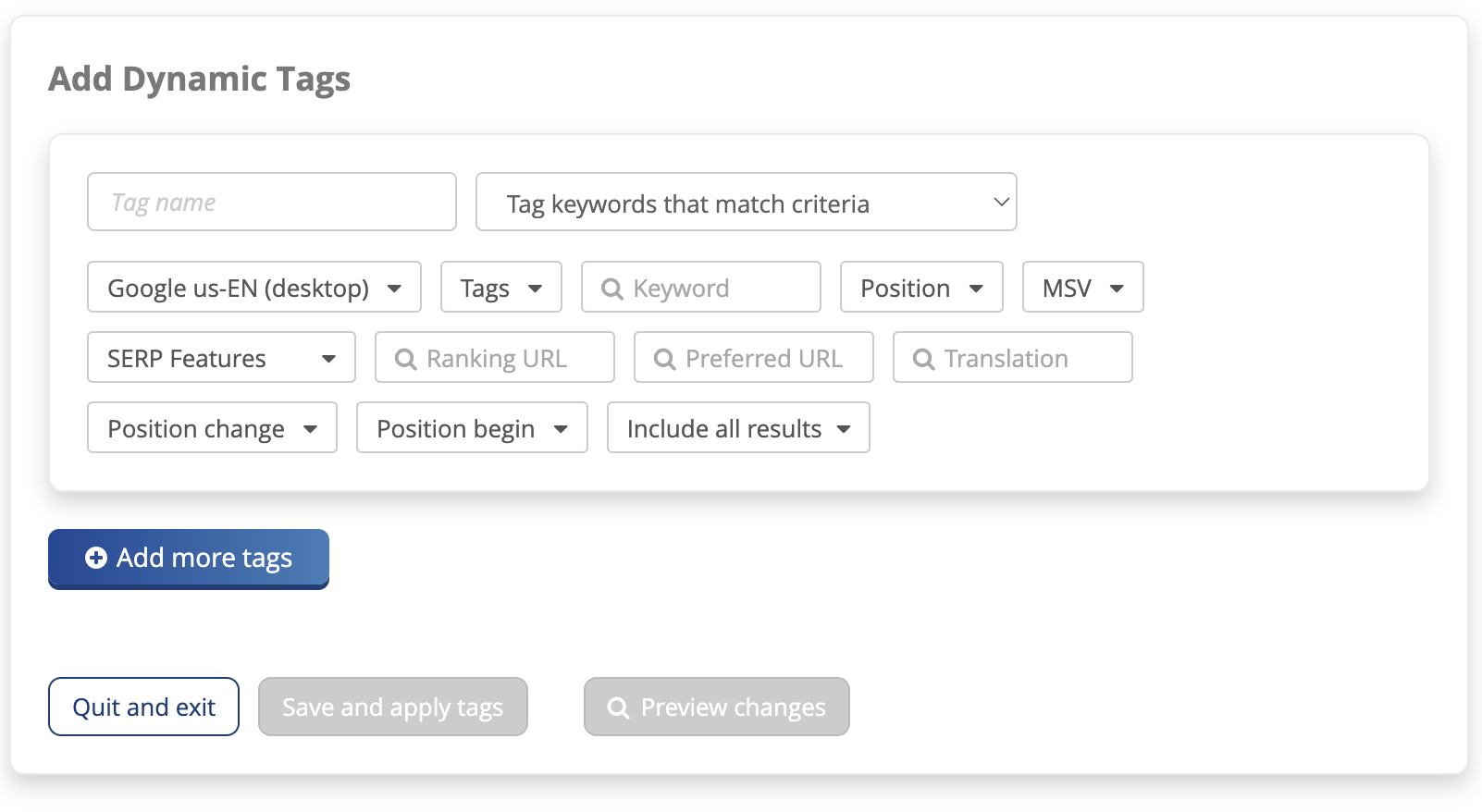
Here are some of our favorite applications of Dynamic Tags:
Tagging is deeply embedded throughout the entire Dragon Metrics platform to help unlock deeper analysis and more meaningful reports. Let’s take a look at some of the ways tagging is used in the app to gain a better understanding of how valuable segmentation can be.
All ranking reports provide filtering by tag. You can filter by a single tag or join additional filters to create more complex queries, allowing you to dig deep into a specific segment.
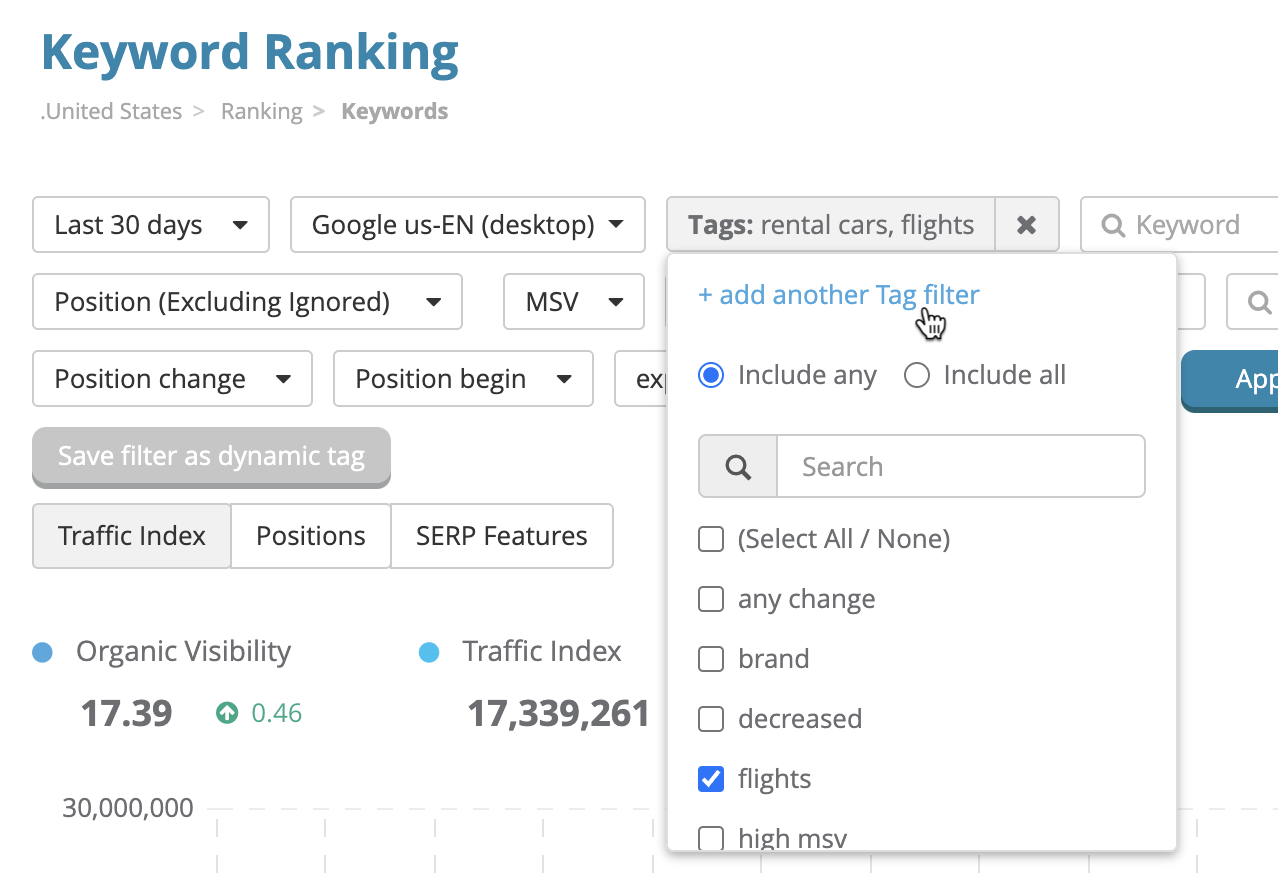
Ranking performance can be compared by tag, allowing you to diagnose which areas need some extra TLC.
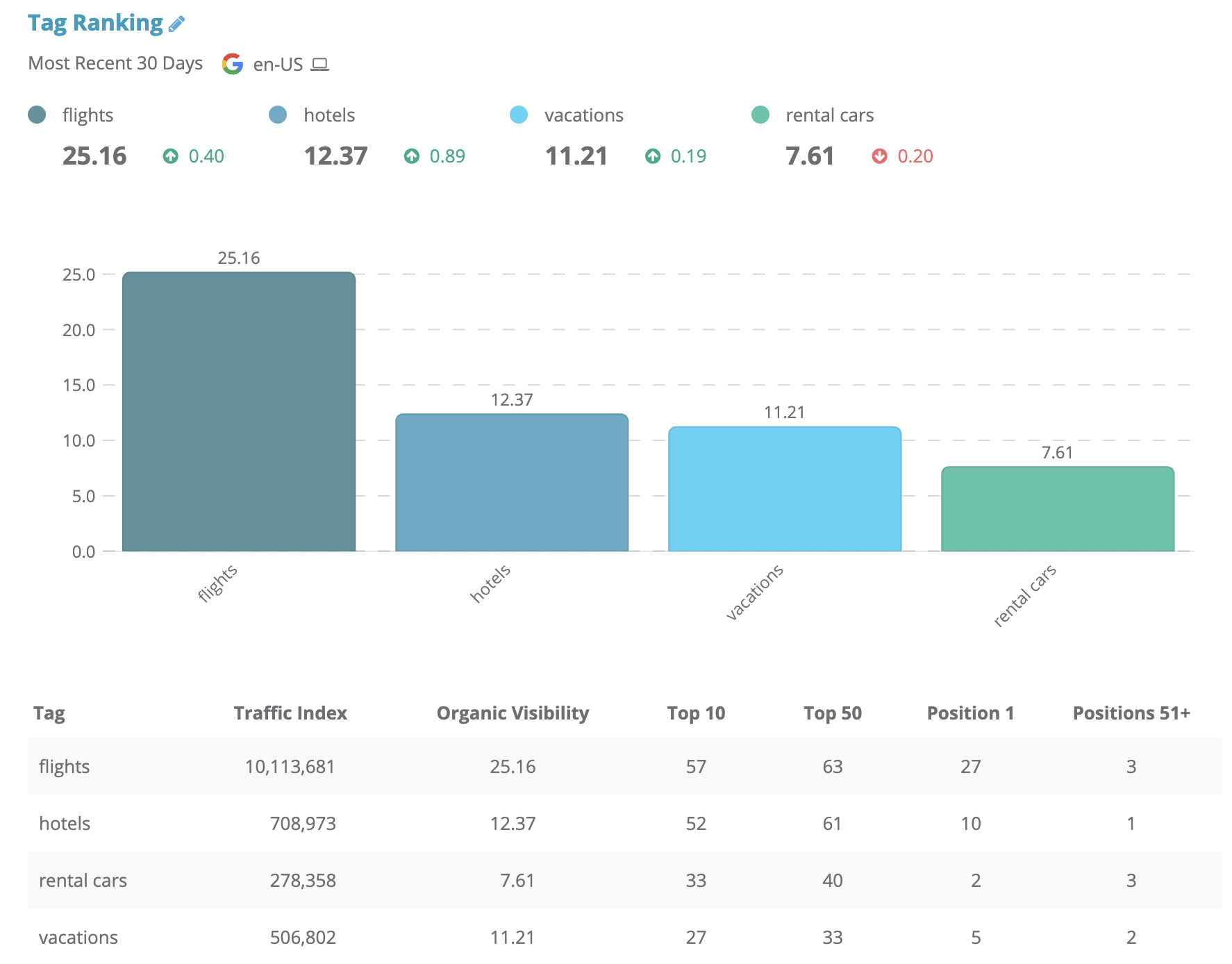
You can even combine segments as both dimensions and filters. For example a travel website comparing ranking for flights, hotels, rental cars, and vacations — but only for nonbranded keywords.
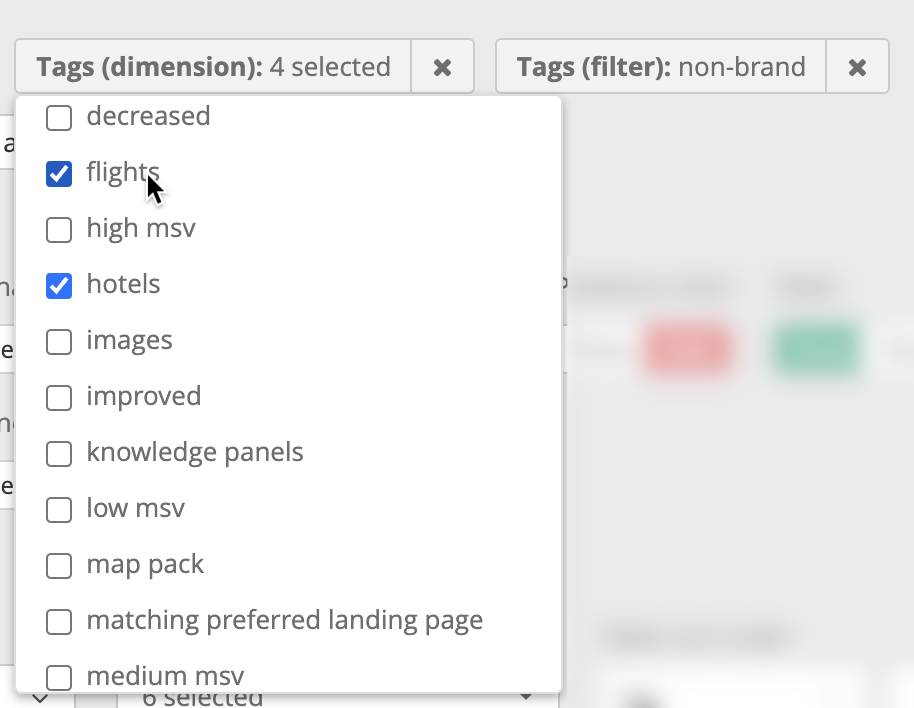
Competition for organic search doesn’t happen at the site level — it’s different for every query, but is usually relatively similar across an entire segment. So rather than focusing on competitors for the entire site, Competitor Discovery will automatically discover who the top-ranking sites are for every segment of your business.
Compare how different Expedia’s competitors are for flight keywords vs car rentals.
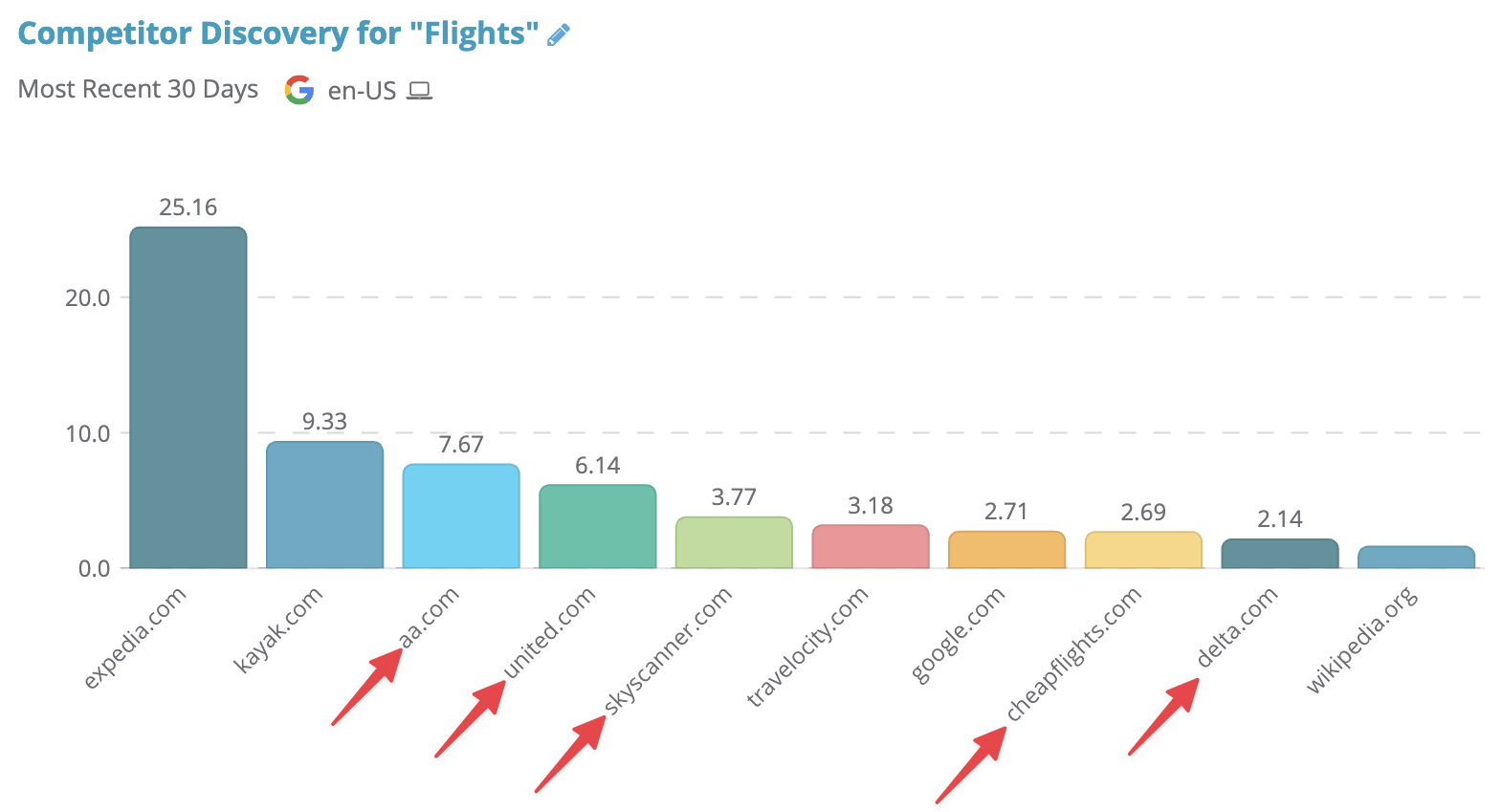
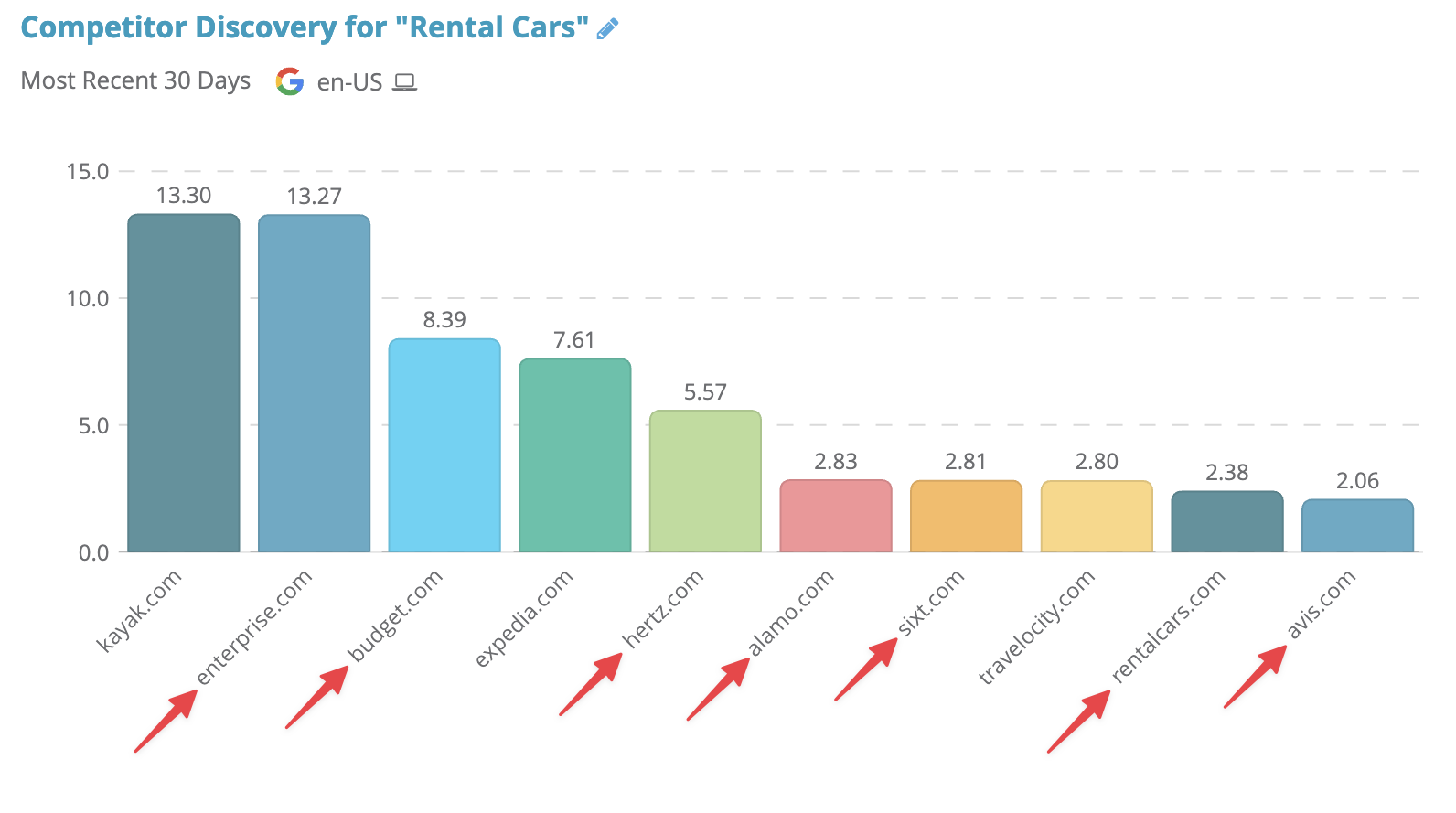
Segmenting your keywords in this way unlocks more detailed competitor analyses by tracking specific competitors for each segment.
Organic traffic to your site isn’t solely determined by your keyword rankings — the number of people searching for your targeted keywords plays a huge factor as well.
Search Demand Trends let you view long-term search volume trends of keywords segmented by tag, so compare how each demand for a set of keywords has changed over time.
For example, by comparing flights and rental cars we can see that search demand for flights in the US stayed low throughout 2020 until early 2021, while during this same period demand for rental cars was highest YoY than before the start of the pandemic since people were driving more instead of flying.
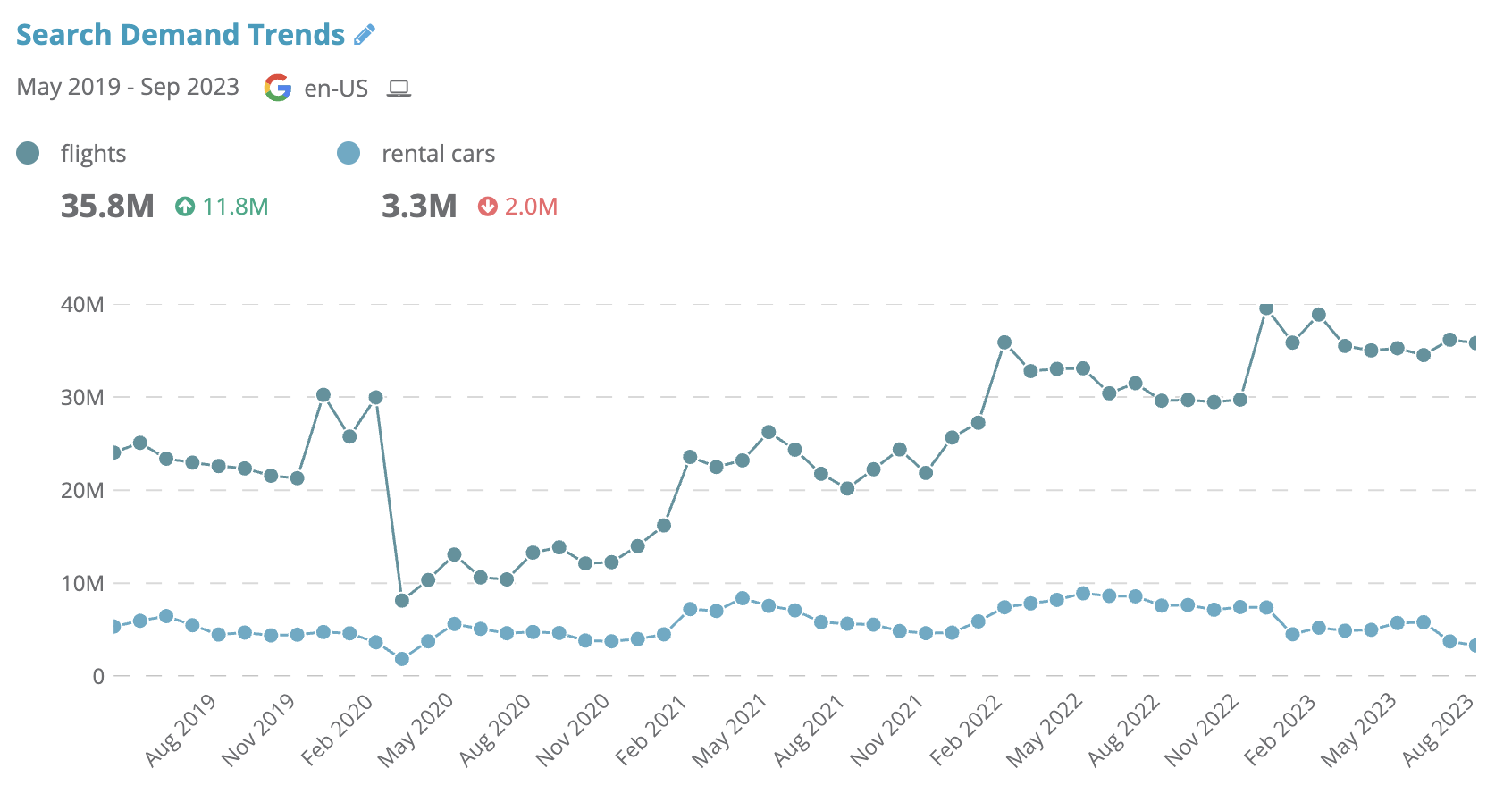
This report is also perfect for measuring the popularity of a set of branded terms together (instead of just looking at each branded term individually.)
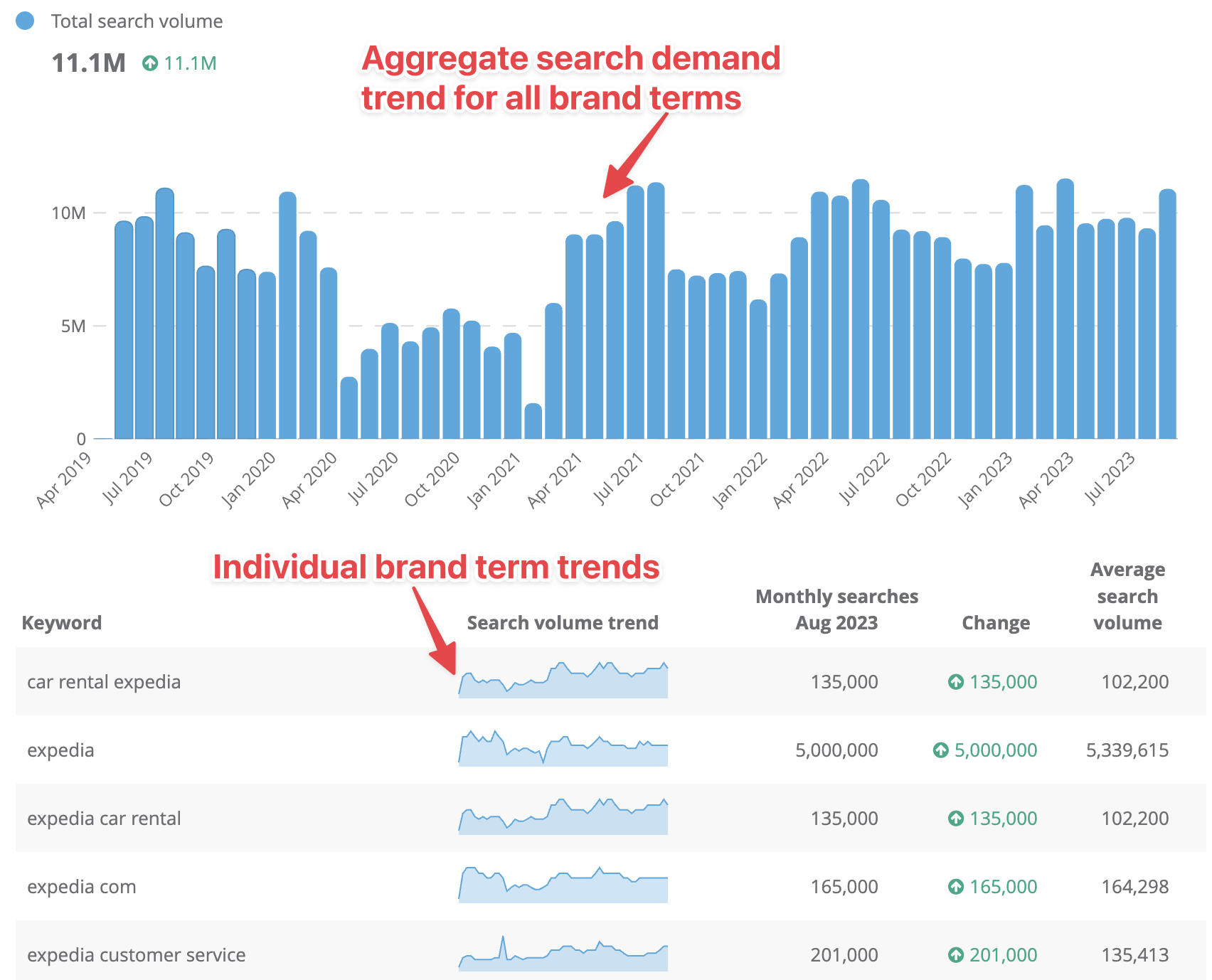
All of these advanced tagging features are available throughout the 90 Report Builder 2.0 reports, so you can create extremely customizable reports that are broken down by segment.
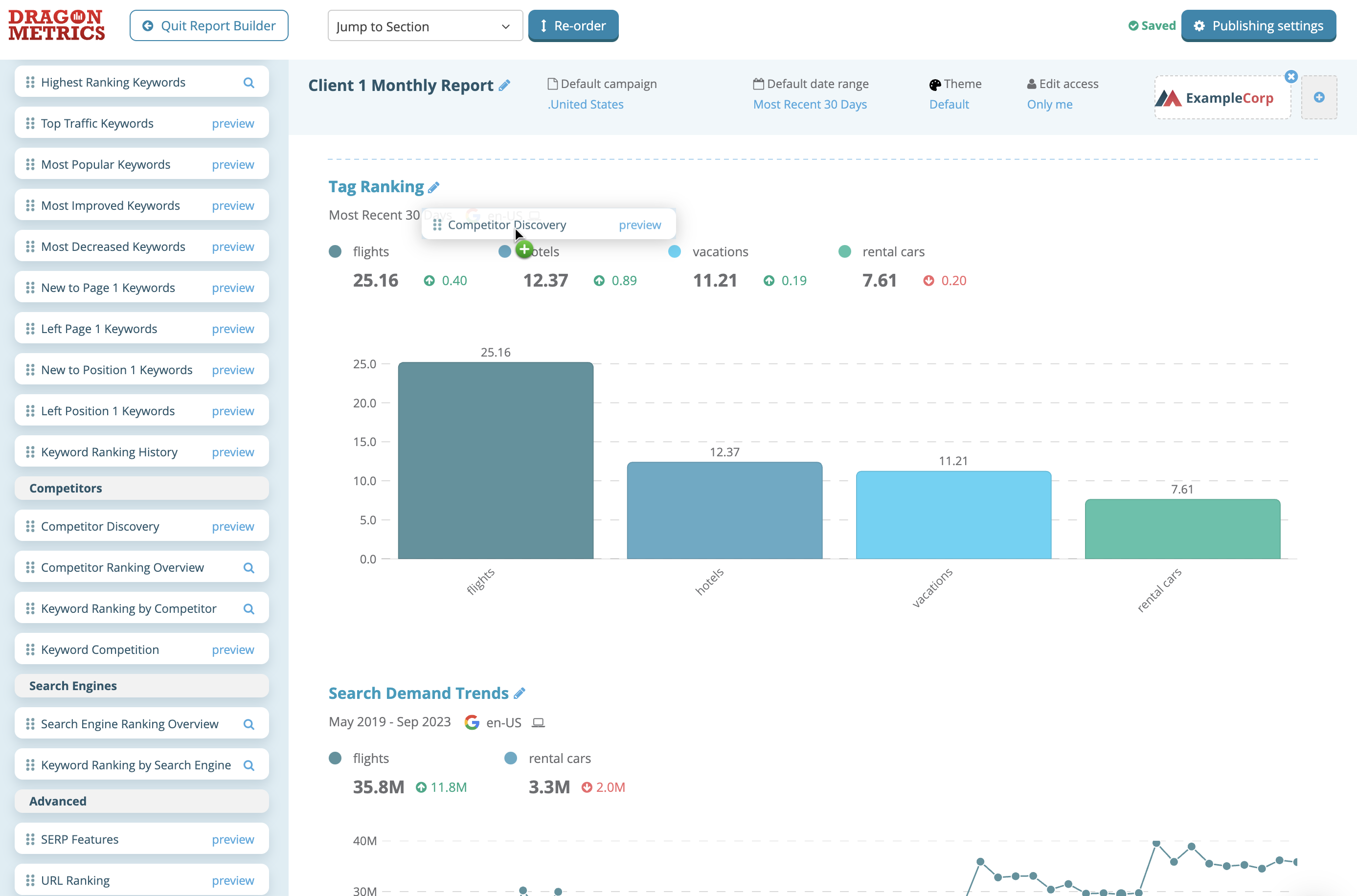
We get it. Segmentation is hard. Maybe you’ve tried it already and decided against it or you’d love to try it but don’t have enough time.
To date, tagging has always been a very manual process with SEOs either updating their tags individually for each keyword or creating complex and time-consuming Excel sheets.
At Dragon Metrics, we understand you’d much rather be spending your time actually improving your SEO, rather than painstakingly tagging your keywords. That’s why we’ve developed Tag Assistant, the ultimate solution for segmenting your keywords.
Tag Assistant is a collection of 11 different tools designed to help you streamline and automate your tagging process. No matter how you’d like to tag your keywords, Tag Assistant provides the right tools for the job.
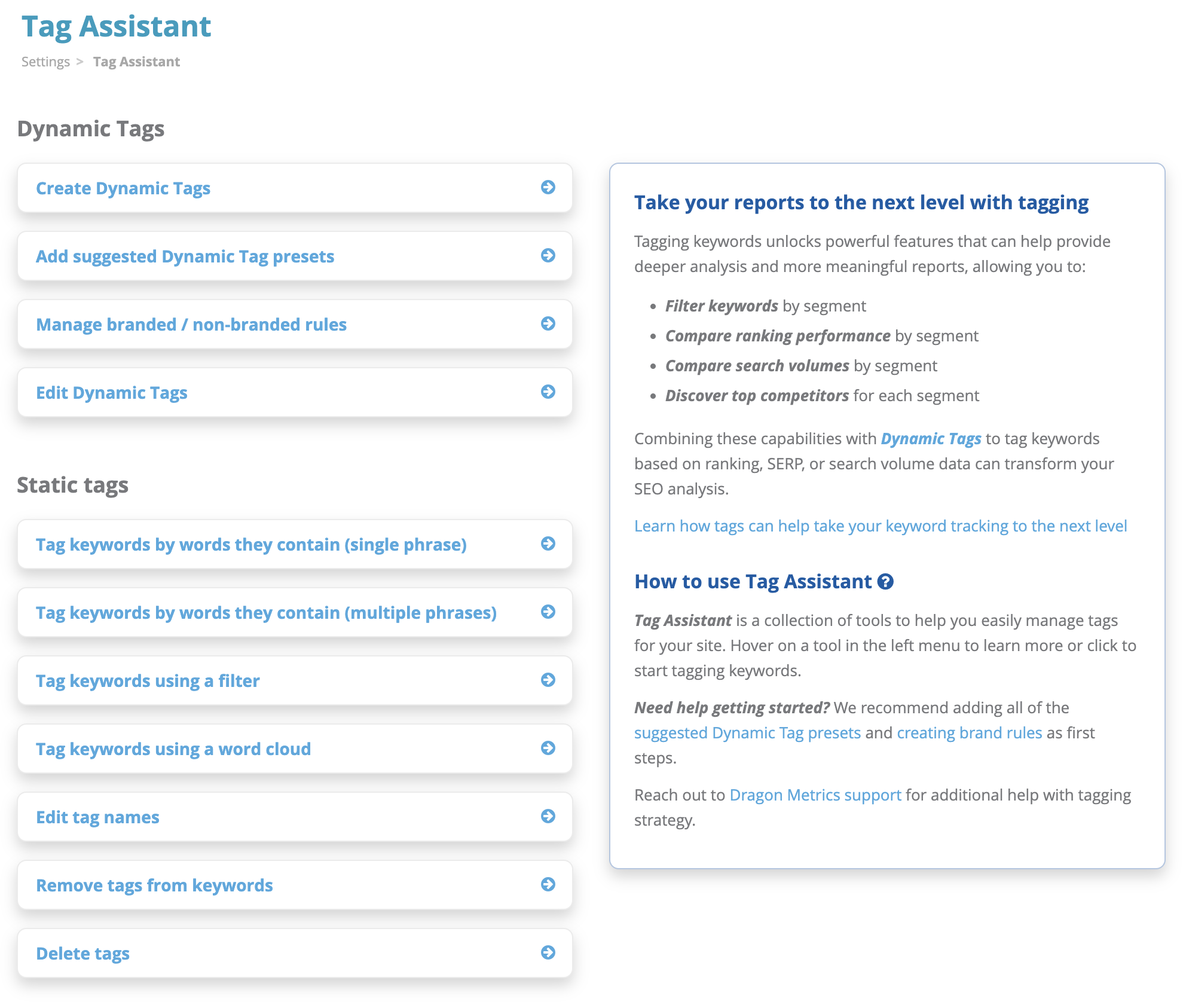
You’ll also able to easily manage and update your tags within Tag Assistant, making those big Excel files a thing of the past. With absolutely minimal setup, you’ll able to leverage all of Dragon Metrics' extensive tagging features in a matter of minutes.
Quickly add multiple Dynamic Tags at once with ease.

If you’re new to Dynamic Tags and want to get set up quickly, you can instantly add some of our favorite Dynamic Tag recipes as presets.
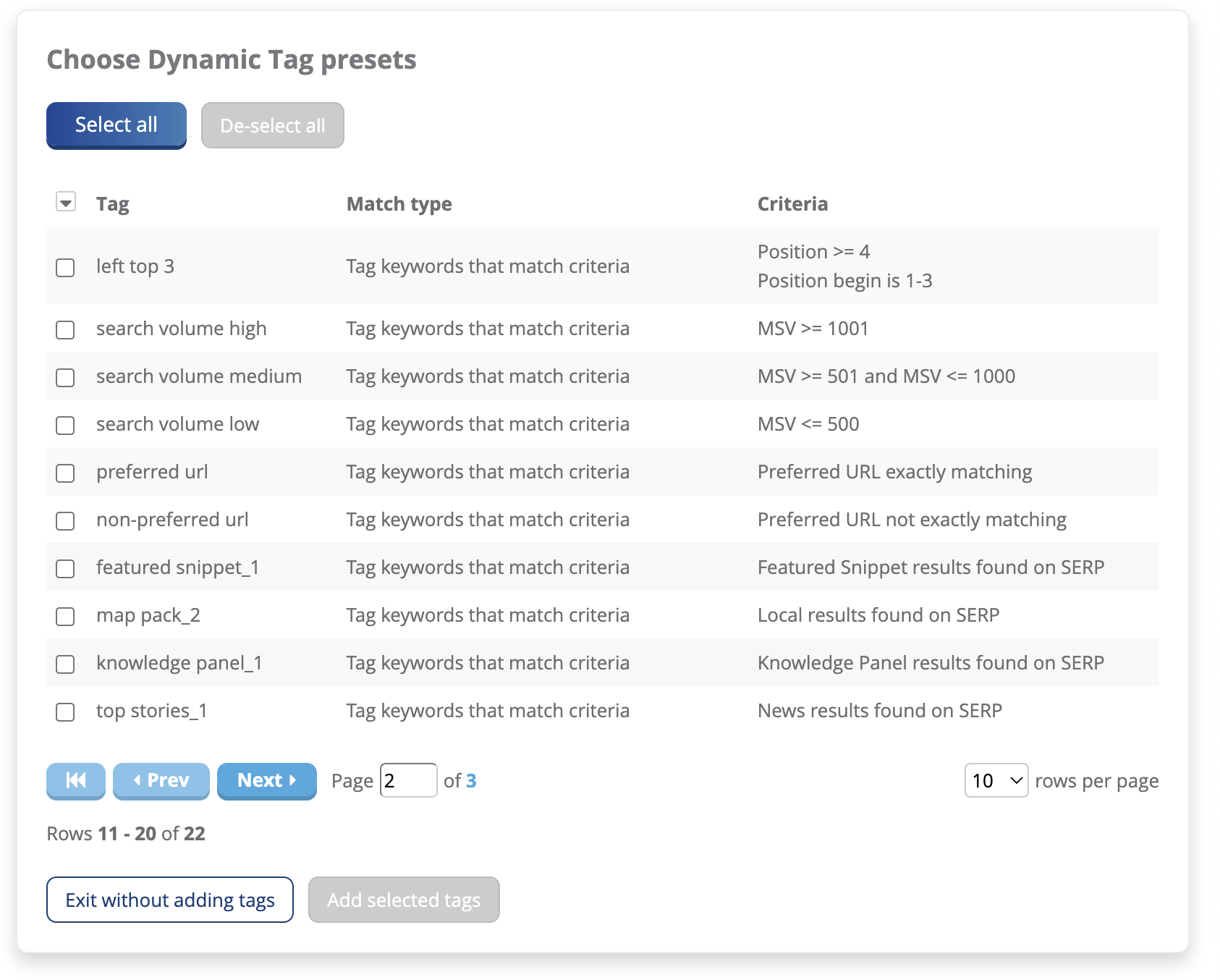
Create Dynamic Tag rules that make sure all of your keywords are automatically categorized as either Branded or Nonbranded.
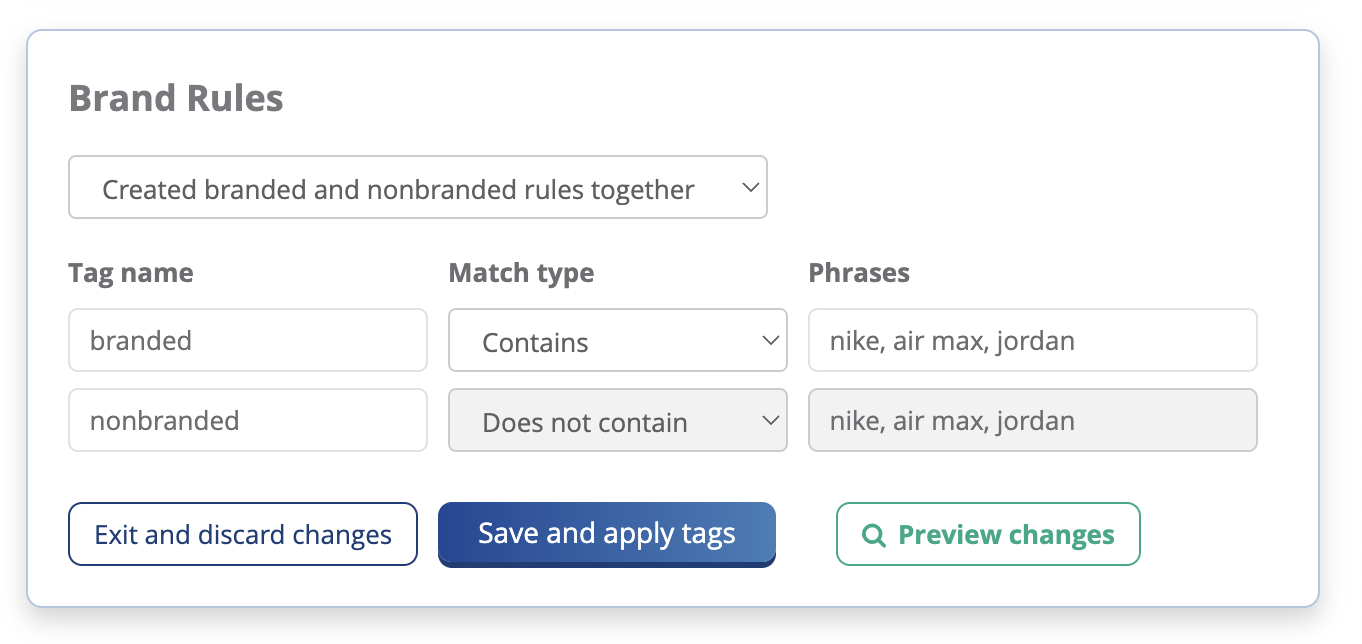
Rename, delete, or adjust Dynamic Tag criteria.
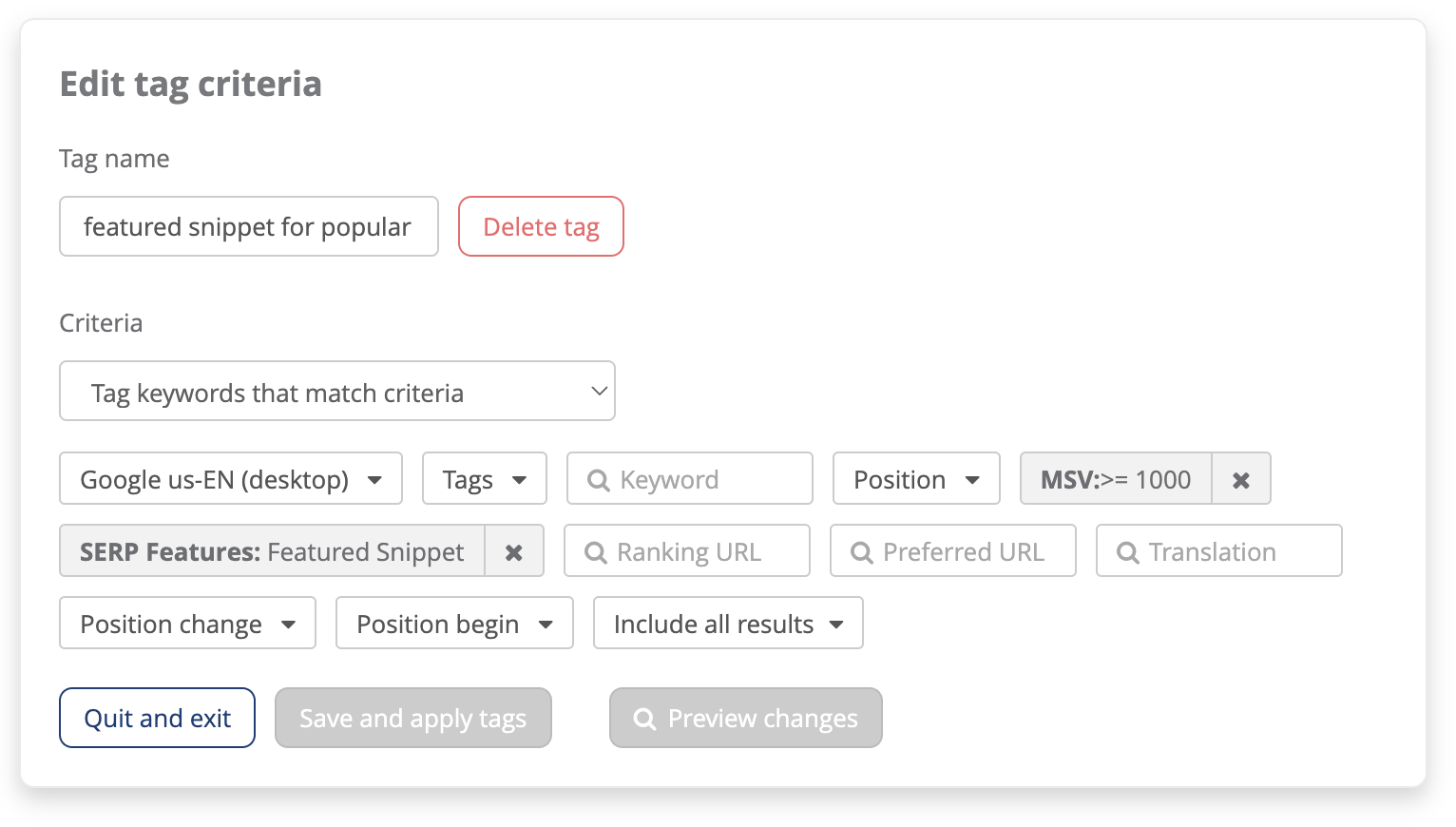
Tag your keywords by typing in a list of phrases they should contain. Any keywords that contain these phrases will be tagged accordingly.
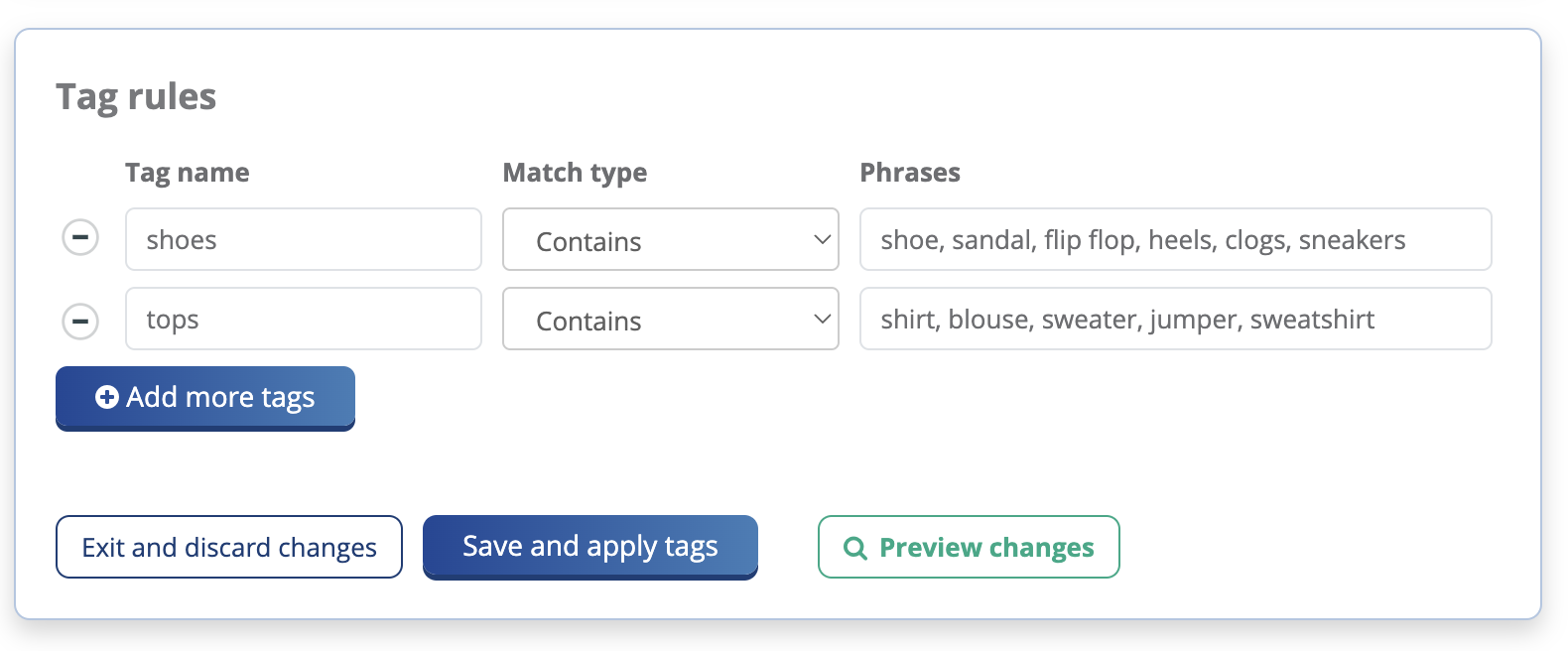
Filter by any criteria and apply tags to all keywords that match.
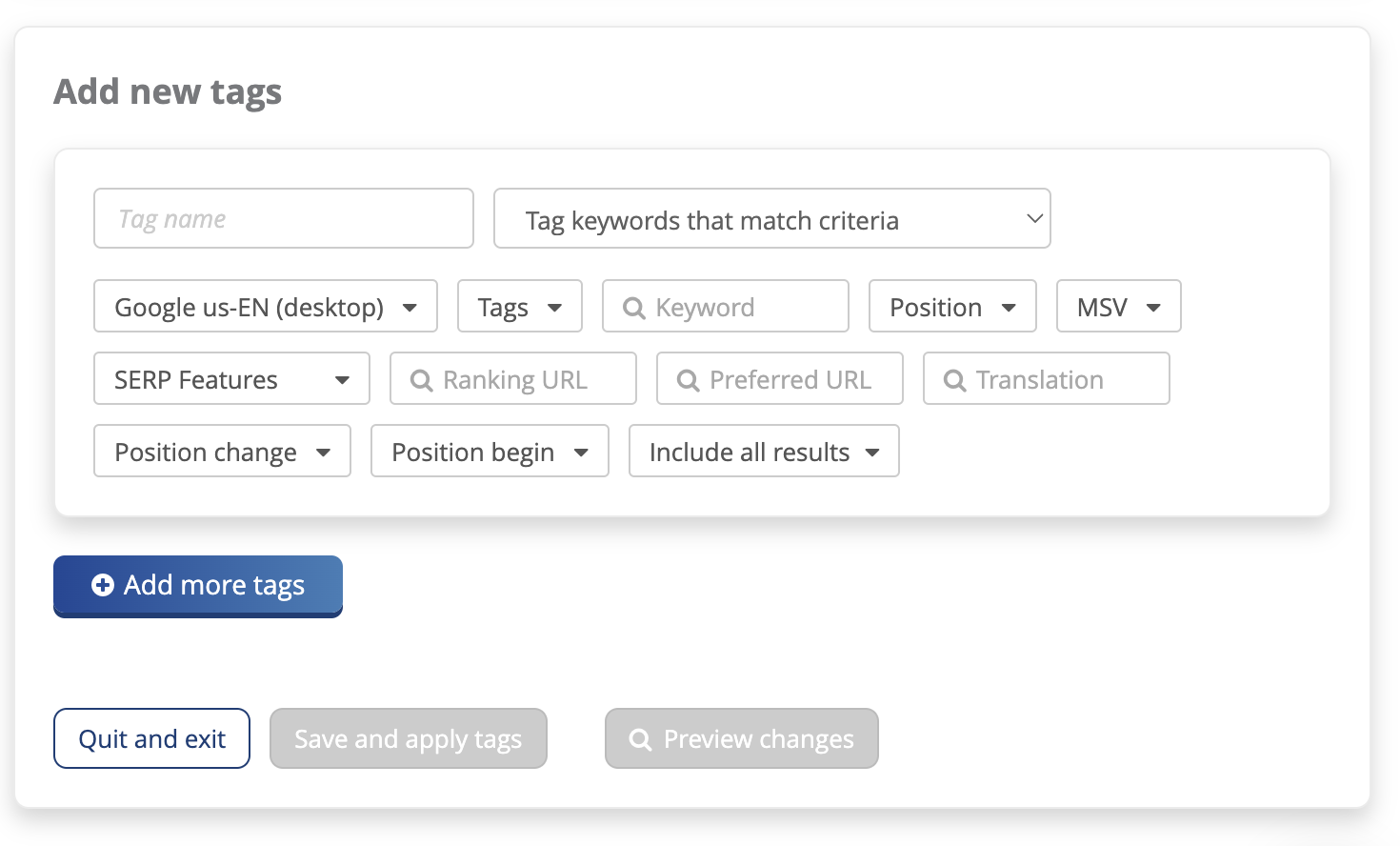
Tag keywords by selecting from the most commonly-used words in your tracked keywords that appear in a word cloud. Any keywords that contain these words will be tagged accordingly.
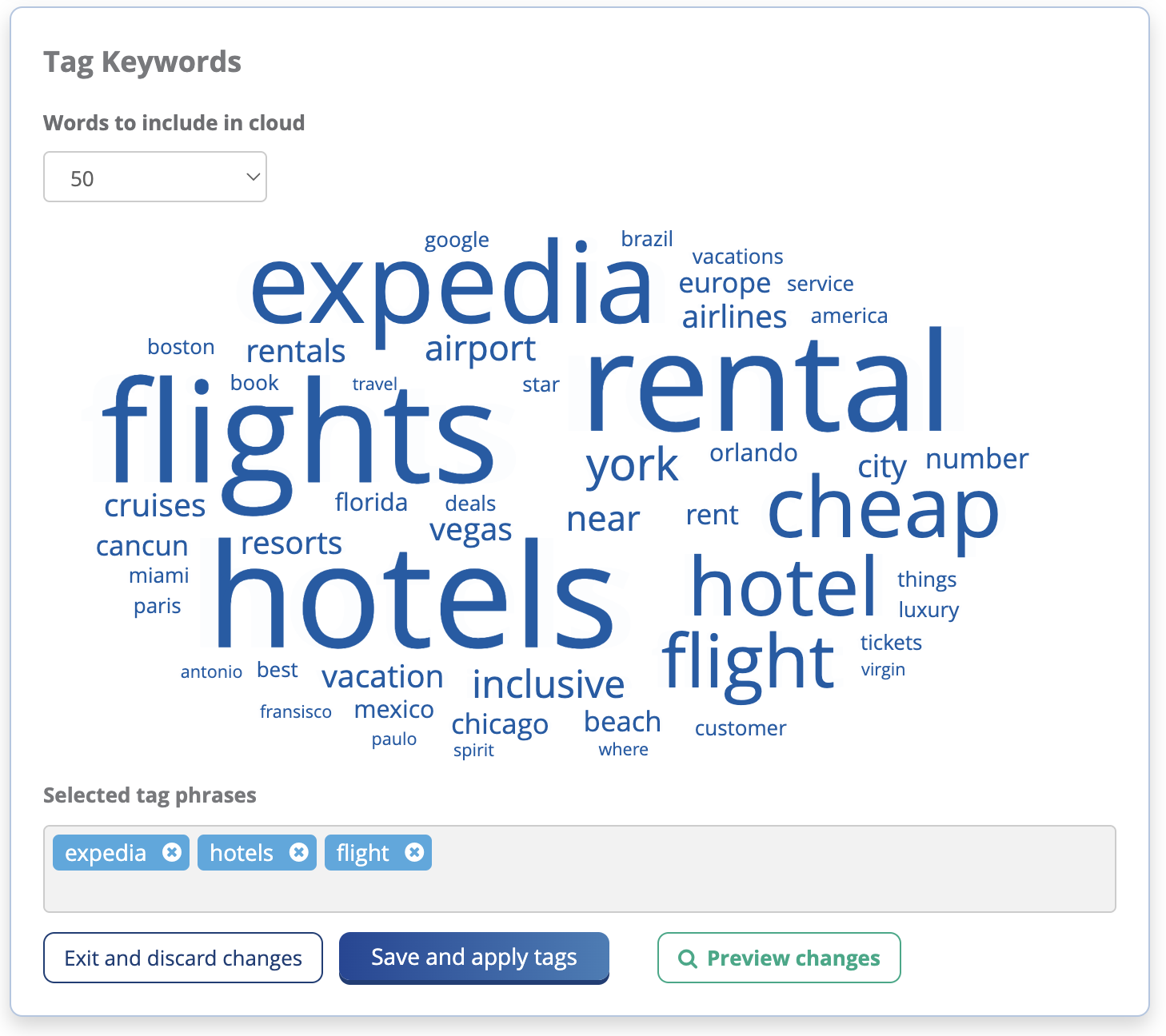
Rename static tags quickly and easily.
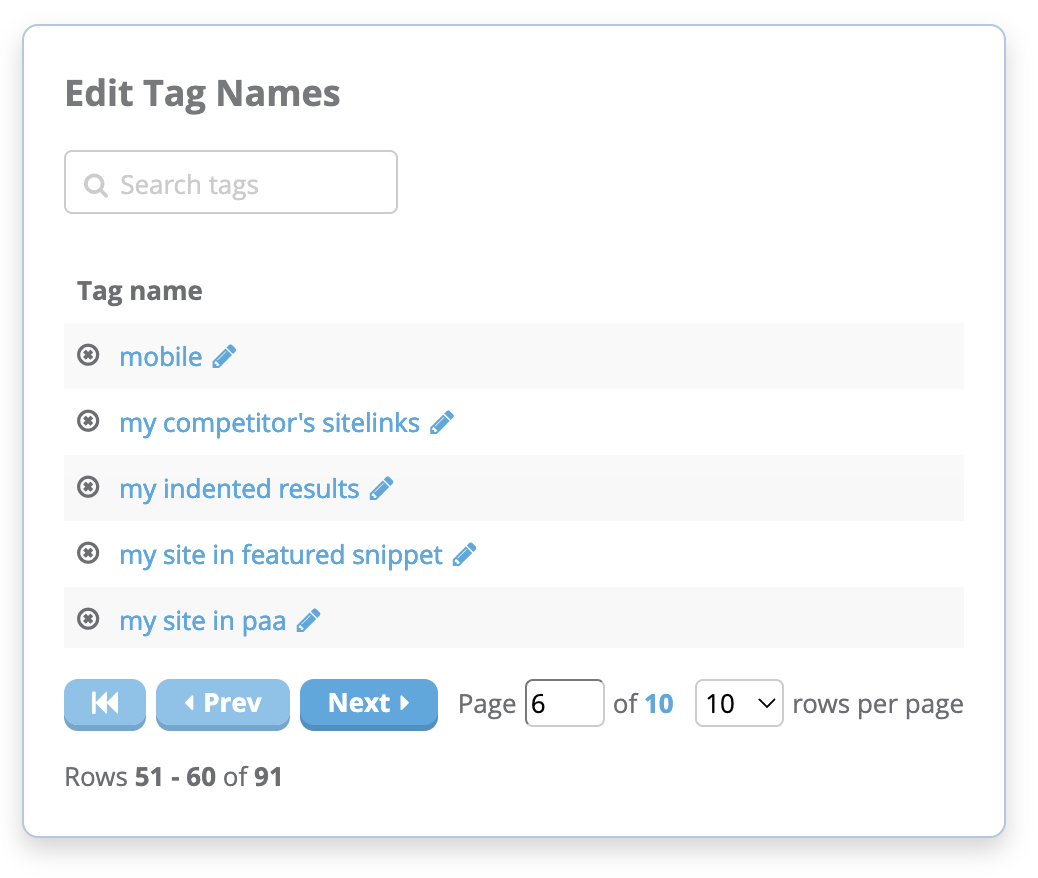
If you’d like to reduce the number of keywords with a specific tag, you can filter for these terms and remove the selected tags from the results.
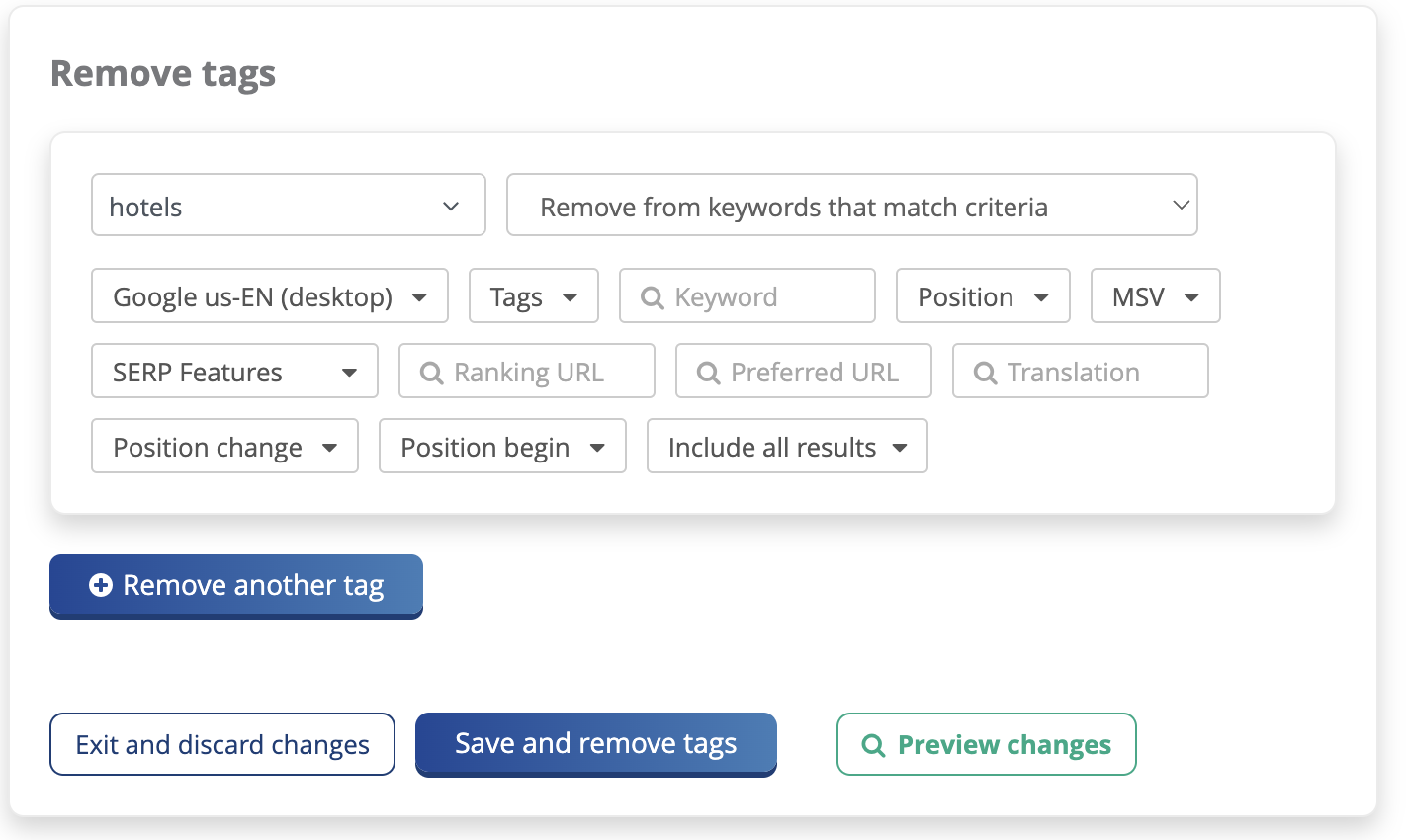
Quickly delete a list of tags from the campaign.
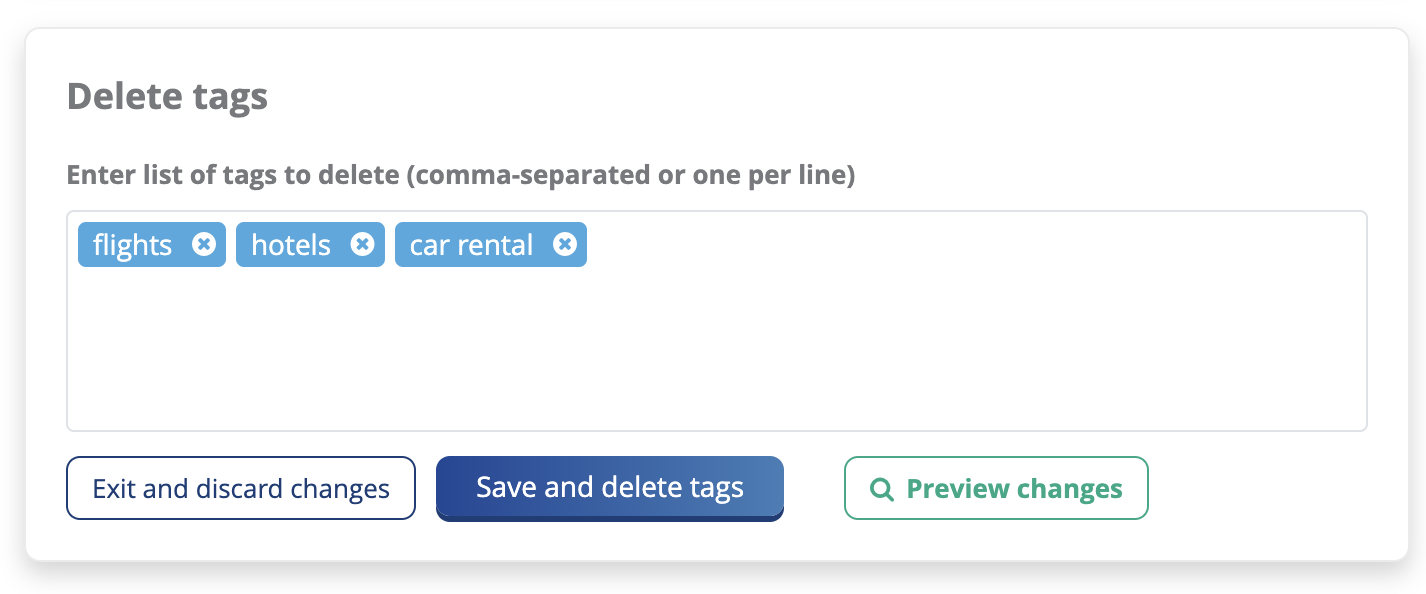
Tag Assistant has the power to change the way SEOs handle tagging, turning it from a manual process you dread to an innovative way of diving deeper into website data. To see it in action, book a demo or set up a free trial (no credit card required!) today!